Archive
Silver Manipulation - The latest from Ted Butler
-
In 2011, silver averaged a loss of 6.8% against 75 selected fiat currencies, while gold charted a corresponding gain of 14.3%. That occurred in a year when gold itself saw a plunge of 20% in USD terms from its high of $1920.
Was there any fundamental change in the silver market that could account for such a drastic plunge in silver prices? I know of none, and industry watchers concur.
Not once, but twice in 2011 did the silver market plunge by 35% in a matter of days on deliberate price moves lower. It is impossible for a world commodity to suddenly plunge 35% in days without some radical change in real supply and demand in a free market. Aside from proving that the silver market is still manipulated, these price plunges would not have occurred had the Commission acted expeditiously in concluding its current silver investigation - Ted Butler.
-
Market manipulation. Price suppression. That’s why silver’s prices in all currencies did what they did in 2011. Ted Butler, in his most recent article “Enough is Enough” recounts the history of CFTC’s investigations into complaints of price suppression in the silver market.
The journey to justice and truth is often long and arduous, but must never be abandoned. The alternative is to live a life lacking substance. But neither should the journey be unnecessarily prolonged. These things tend to creep up on you day by day, but we have passed the point of the CFTC taking too long for deciding if the silver market has been manipulated in price. Enough time has passed.
Having started in August 2008, we are now at the 3.5 year mark in the current investigation into silver by the Enforcement Division of the Commodity Futures Trading Commission (CFTC). Never has a similar investigation taken this long. Considering that the current silver investigation is the third such inquiry by the Commission into alleged downside price manipulation by large commercial participants on the COMEX, the agency has spent most of the past decade investigating silver. As recently as this past November, the Commission reaffirmed that the silver investigation is ongoing. Still, the issue is unresolved.
The current silver investigation began due to revelations I discovered and wrote about in the CFTC’s Bank Participation Report of August 2008. This report indicated one or two US commercial banks held a concentrated short position which was unprecedented and uneconomic in terms of real world supply and demand. I asked the question – how can one or two US banks holding a short position equal to 25% of annual world production not be manipulative? That question has not been answered by the Commission to this day. Later, I discovered that it was basically only one US bank, JPMorgan, which was the big COMEX silver short.
Not for a moment do I believe that the CFTC initiated the current silver investigation (or the previous two) just because I wrote a few articles. The key was that so many readers took it upon themselves to write to the Commission and their elected officials about the issues of concentration and manipulation in the silver market. Simply put, there would have been no silver investigations had not great numbers of you petitioned the regulators. Please think about that for a moment. It is beyond extraordinary that the agency has investigated and continues to investigate such a small market like silver. That can only be because of public pressure and that the evidence was compelling. Most remarkable of all is that the core allegation in all three silver investigations has remained the same – manipulative short selling by large commercial interests on the COMEX.
In the two prior investigations of May of 2004 and 2008, the Commission’s Division of Market Oversight (DMO) concluded that the silver market was not manipulated.
Particularly puzzling in the 2008 report was the contention by the DMO that the concentration on the short side in COMEX silver wasn’t unusually large and that the biggest short sellers regularly changed places, so that there wasn’t one big permanent short. The report was issued on May 13, 2008 or two months after JPMorgan acquired Bear Stearns and its concentrated short position in COMEX silver. How the DMO could overlook the transfer of the most concentrated short position in the history of the commodity markets is beyond comprehension. Subsequently, I have come to believe that Bear Stearns’ forced acquisition was caused by the giant silver short position going against it (silver was at a 27-year price high at the time of the takeover) and not mortgage-related difficulties. In this article, I accused the DMO of lying.
Unlike the current silver investigation, the previous investigations were concluded by the Commission in months, not years. Timing aside, all three silver investigations share a commonality apart from stemming from the same basic core allegation of manipulative short selling. That commonality is the Commission’s refusal to conduct a fair and balanced investigation. I confess to being the instigator behind all three silver investigations (with you being the enabler). Not once, in any of these investigations has the agency ever contacted me or anyone I know who is familiar with the allegations. I even complained to the CFTC’s Inspector General about the one-sidedness of the process. How can you conduct a balanced investigation on manipulative short selling when you only question one side, the shorts?
The real problem with the findings of the CFTC of no manipulation in their previous investigations is two-fold. First, it provides a shield and comfort to the perpetrators of the manipulation in that they can continue to hide behind the agency’s findings in the furtherance of an active crime in progress. The longer the CFTC takes to act or report on its current investigation the comfort to the manipulators is maintained, at a cost to nearly everyone else. Second, the prior findings put the agency in a tricky spot. Because the Commission had previously found nothing amiss in the silver market on two separate occasions, if the agency uncovers any wrongdoing in silver in the current investigation it will, effectively, contradict its former findings. Obviously, it will be loath to do so.
The fact that the Commission will contradict its former findings should it now find something wrong in silver may explain the unprecedented delay on the part of the Enforcement Division to act. But the reluctance to reverse the former findings is a weak excuse for the Commission to fail in its most basic mission, namely, preventing fraud, abuse and manipulation. Most importantly, the silver manipulation is a crime in progress and the Commission’s delay in terminating it has allowed for untold continuing damage to thousands of market participants at the hands of the manipulators.
Full article at SilverSeek.com
Related articles:The latest on Silver Market Manipulation





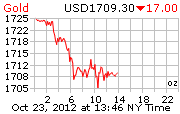
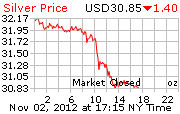
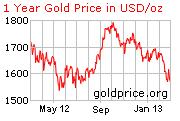
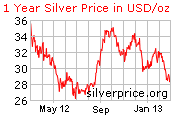
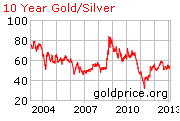
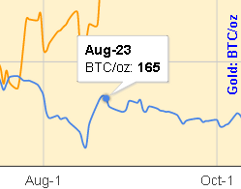
Silver Manipulation Explained
-
-
Ted Butler explains the Silver Manipulation Scheme. iPad users, tap here.-
Virtual roundtable discussion with Eric Sprott, David Morgan & CFTC Commissioner Bart Chilton. iPad users, tap here.-
Source: Financial Sense Newshour
Share this:
Like this: